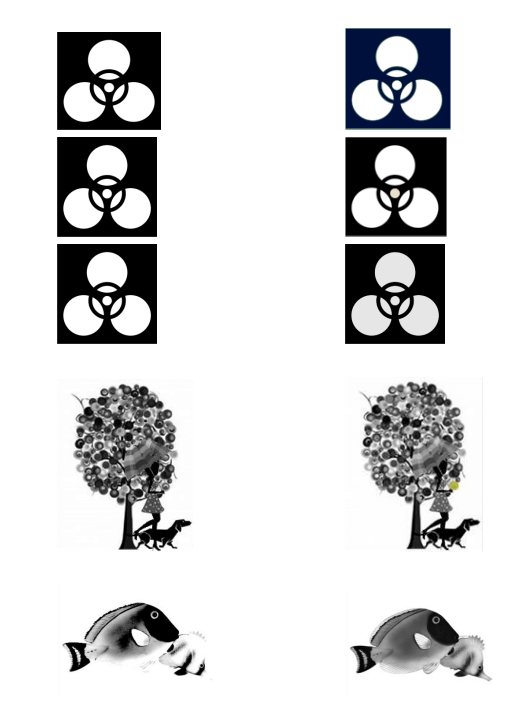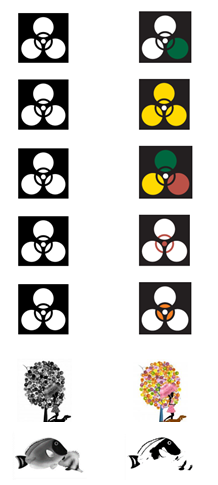A Narrowing of the Scope of Protection of Black and White Marks in Europe
On 15 April 2014 the European Trade Mark and Design Network (Europeantmdn) published The Common Communication on the Common Practice of the Scope of Protection of Black and White Marks. This publication stems from the Convergence Programme, a joint project between the European Community Trade Marks Office (OHIM) and the National Trade Mark Offices (TMO) of the EU, whose goal is to achieve practice convergence in several areas where different practices exist across the EU. OHIM updated its Guidelines to reflect the new practice on 2 June 2014 but other participating Offices, including the UKIPO, have yet to do so.
What Has Changed?
Prior to the Common Communication, it was considered best practice across much of Europe to file a logo/figurative mark in black and white (“B&W”) regardless of whether its use was in one or more colours. A B&W registration was held to provide the broadest scope of protection, covering all colours/colour combinations. This is no longer the accepted position at OHIM or a number of other participating National TMOs, including the UK.
The new practice applies to priority, relative grounds and genuine use, on which the Common Communication states the following:
PRIORITY: A trade mark in B&W from which priority is claimed will not be considered identical to the same mark in colour unless the differences in colour are insignificant.
RELATIVE GROUNDS: An earlier trade mark in B&W is not identical to the same mark in colour unless the differences in colour are insignificant.
An insignificant difference is defined as “a difference that a reasonably observant consumer will perceive only upon side by side examination of the marks”.
GENUINE USE: Use of a mark in a form differing in elements which do not alter the distinctive character of the mark in the form in which it was registered is deemed genuine use. The new practice states that a change only in colour will not alter the distinctive character of the mark as long as: The word/figurative elements coincide and comprise the main distinctive elements; the contrast of shades is respected; the colour/combination of colours does not possess distinctive character in itself and; the colour is not one of the main contributors to the overall distinctiveness of the mark.
The practice includes similar guidelines on greyscale marks.
Practical Examples
The following are taken from the Europeantmdn Common Communication and are reproduced in OHIM’s new Guidelines:
First, as regards what would be considered an “insignificant difference”, applying the above-mentioned definition, the following examples would be seen as insignificant differences, and therefore the change in colour would not be perceived by the consumer:


Practical Impact
It is important to note that this new “Common Practice” is not truly common, having significant geographical and subject matter exclusions. Italy, France and Finland did not participate. Sweden, Denmark and Norway opted out due to “legal constraints”.
The most notable exclusion to the new practice is infringement. Indeed the new practice does not sit squarely with the CJEU’s Decision in Case C-252/12 in Specsavers v Asda (see our Briefing Note of 29 July 2013) where a more practical assessment of all relevant factors was taken: Specsavers’ figurative registrations were in B&W but the CJEU held that the colour in which the marks were used in practice, and the colour in which the alleged infringing marks were used, were of relevance in determining both confusion and whether unfair advantage had been taken of Specsavers’ reputation.
Other exclusions to the new practice include similarities between colours; identity when the earlier mark is in colour and the later in B&W/greyscale; use in the context of acquired distinctiveness and colour marks per se.
On priority, careful consideration should now be given to whether a first filing outside the EU should be in B&W or colour. Applicants may face a difficult balancing act between scope of protection and the ability to claim priority. For example, a logo mark that is used in colour may be first filed outside the EU in B&W, in accordance with best practice under local laws. Advice in relation to a subsequent CTM filing for the mark would be to file in colour but this may result in an inability to claim priority for the CTM.
On relative grounds the new practice does not mean, for example, that a B&W mark cannot be relied on to successfully oppose an application for the same mark in colour; simply that they may now be considered similar rather than identical, thus requiring proof of the existence of a likelihood of confusion which is less straightforward than in cases of double identity.
On genuine use, it will now be important to consider refiling for a colour version of a logo/figurative mark currently registered in B&W where use is in colour and that colour is one of the main contributors to the overall distinctiveness of the mark.
Comment
Advice on the relevance of the new practice will need to be individually tailored and will vary depending on the type of mark, how it is used or intended to be used, the jurisdiction of interest and the available budget. Generally speaking a word mark registration will continue to provide the broadest form of protection for a word per se. Where figurative elements of a combined word/logo mark are distinctive, it may be advisable to register both word forms and figurative forms to provide the best cover. If a figurative form is used consistently in a particular colour, the default position should be to register the mark in that colour. There may be occasions where it is beneficial to additionally file in B&W. Registration in B&W alone may still be advisable where colours used are subject to frequent change.
Ultimately it should be remembered that these are only practice guidelines, each case will need to be assessed individually and the new practice may well be subject to challenge in the Courts.
